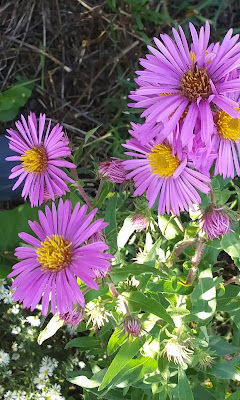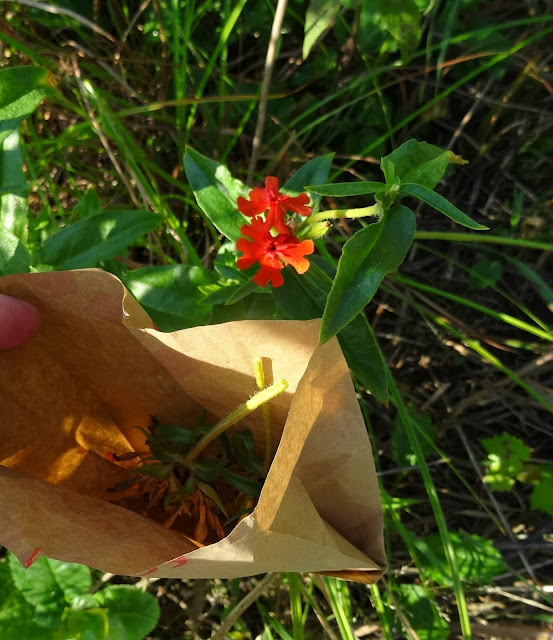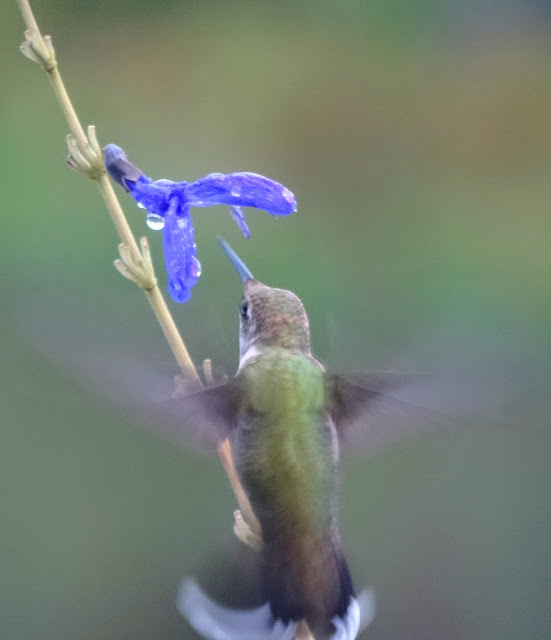12/30/2022
12/23/2022
sparrow
12/20/2022
logs in snow
11/25/2022
11/19/2022
muskrat home
This year, I noticed an area of collapsed dirt over their burrow. Recently, it seemed they were active on the north shore of the pond, digging a new burrow where they may spend the winter.
Some muskrats build domed houses of mud and vegetation visible above ground, but just as often they dig burrows with an underwater entrance.
11/14/2022
ice stars
'Ice stars' or 'Lake stars' develop under very specific early winter conditions.
First, a cold snap that freezes the pond ice an inch or two thick, followed by warmer days that bump the ice temperature above 32F. Pores form in the ice sheet where there are any imperfections in the water surface (plant matter, logs). Then, some snow falls with a cold front blowing in. Warm water wells up from beneath the thin layer of ice, covered with a coating of snow and slush. Temperature and precipitation have to be perfect for this to happen.
11/04/2022
11/01/2022
tamarack in autumn
The Tamarack tree Larix laricina is a deciduous tree. In summer it has lush green needle-like leaves; in autumn the leaves turn golden before they drop. Next to the pond, it gets along with other swamp and wetland species.
This tree is also a conifer, making small cones that shed winged seeds in the fall.
10/28/2022
heat wave in October
70+ degrees F. !! Wonderful autumn weather.
Turtle still sunning on rocks in the pond.
Frog jumping when I venture into the wetland.
Mallard pair still paddling around, feeding.
New England Aster Symphyotrichum novae-angliae blooming.
10/12/2022
first snow 2022
Snow overnight. The log is totally exposed, because we are down more than 8 inches of precipitation.
10/10/2022
hidden nest found in autumn
We trimmed back some undesirable willow plants around the pond. That action revealed a hidden nest. Earlier this summer, I found one Red-winged Blackbird nest near the pond in some reeds. All summer long, the male RWBB was bothered when anyone walked near the willows. He even dived at my head when I walked near that shore. I assumed he and his mate had a nest among the reeds closer to the pond. No wonder I could not find it in the reeds! It was revealed -- low in the willow sprouts -- when we trimmed around that area.
10/03/2022
canada milkvetch
Seed pods of Canada Milkvetch are beginning to dry enough to spill the tiny seeds. In the background is the ubiquitous white asters that grow everywhere among native wildflowers at this time of the year.
10/01/2022
9/20/2022
9/19/2022
9/18/2022
9/14/2022
sneezeweed
9/08/2022
very green heron
9/07/2022
turtle tower
9/06/2022
vivipary = seed heads sprouting
This wildflower was finished blooming and was forming seeds. But its seed head sprouted green leaves! Fascinated, I looked closer. Some of new seeds were actually germinating and sprouting while still in the seed head. Usually, they wait until they are in the perfect place (soil, moisture, temperature, sunlight) to begin new growth. Sometimes you see this while seeds are still inside the fruit, like a tomato or green pepper. In plants, it is called vivipary (Latin for 'live birth') and involves seeds germinating before their determined time. I first learned about this a few years ago when my grandson sent me a photo of a sunflower seed head that was doing the same thing.
9/05/2022
scouring rush 'horsetail'
Scouring Rush Equisetum hyemale grows in the wetland around the pond.
It is also called 'horsetail'. This plant has coarse fibers and silica deposits in its stems, so herbivores don't eat this plant.
For more about this plant, see blog posts on 7/23/2020 and 6/25/2021.
9/04/2022
hummingbirds sitting still
Ruby-throated Hummingbirds have been enjoying the red trumpet flowers on the lonicera vine all summer. Finally, we saw them sitting still!
9/03/2022
baby snapping turtle
We found this baby Snapping Turtle on a street curb in the neighborhood. We relocated it to the wetland around the pond, hoping it would find enough to eat there. Snapping Turtles Chelydra serpentina eat water plants as well as insects, worms, snails, small fish, and anything edible that it can find.




























